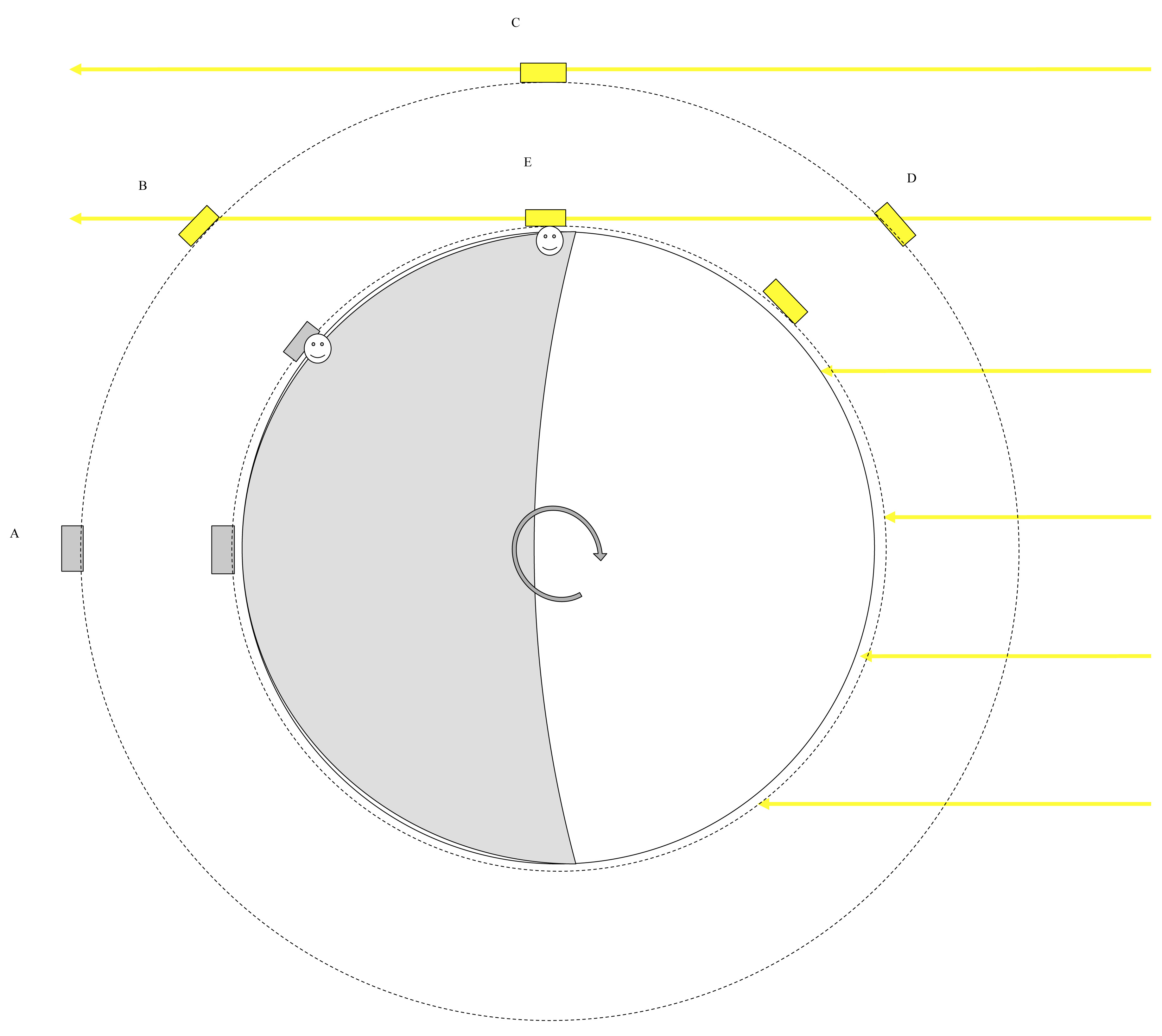January 08, 2016 Filed in:
ArticlesRoberta Tevlin, OAPT Newsletter Editor, Teacher Danforth CTI
roberta.tevlin@tdsb.on.ca
Teaching astronomy in the middle of a big city can be very frustrating. Your students can observe the Sun, the Moon, a few stars and sometimes a couple of planets and that’s about it. Not quite! It turns out that you can also see the International Space Station!
What does it look like?The space station looks like a star but it is brighter than all of the stars, planets and other artificial satellites. It is so bright because it is much closer than the natural objects and because it has huge solar panels that reflect more sunlight than the other satellites. It looks like a star, but you can tell that is not a star because you can see it moving slowly and majestically across the backdrop of the stars.
If it is so bright, why haven’t I noticed it before?It is only visible for a few minutes each night. (Right now, it is only visible just before sunrise.) This happens because it is in a low orbit and we see the ISS by reflected sunlight. This means it will only be visible when the you in the Earth’s shadow and the ISS is not. In other words, you can see the ISS when it is night time and it is not eclipsed by the Earth.
This can be made clearer using the diagram below. It shows the Earth as viewed from the North Pole, two different satellite orbits and a couple of students looking at the night sky.

Consider the satellite with the higher orbit. In which of the four labelled positions - A, B, C, D - will the satellite be visible? Both students will be able to see it at positions B and C. Neither student will be able to see it at A because it is in the Earth’s shadow. Neither will be able to see it at D even though it is reflecting lots of light. It is below the horizon for the student on the left, and when the other student looks toward the satellite, the student will also be looking directly towards the Sun.
Now consider the satellite in the other orbit, the one that is very close to the Earth. This satellite will be visible less often because it will be eclipsed and below the horizon more often. In the diagram above, only the student near the top can see it and only when it is near position E. The ISS is only visible at sunrise and sunset and only for a few minutes.
When and where can you see the ISS?The position of the ISS changes much more rapidly than the positions of the Moon or planets. It has a cycle that is roughly a couple of months long. It shows up at sunrise for a few weeks, disappears for a few days or a few weeks and then shows up at sunset for a few weeks and disappears for a few days or weeks. To know exactly when and where to look, I go to
http://iss.astroviewer.net/observation.php (More technically proficient people may prefer to download
ISS Spotter (Apple) or
ISS Detector Satellite Tracker (Android).)
The Observation page shows you the projected path, brightness and duration for the next ten days at your location. It only projects ten days into the future because the path of the ISS is not as predictable as the Moon and planets. There are more effects from air resistance and intentional adjustments may be made to its path.

The Home page shows you an image of what the view of the Earth look like to Astronauts on the ISS.

It also shows the ‘ground track’ or path of the ISS over the Earth’s surface and it shows when the Earth will be in darkness. This will help reinforce why the ISS is only visible at certain times.

How can you fit the ISS into the curriculum? The ISS can be used in grades 6 and 9 Science, grade 12 Earth Space Science and grade 12 physics. I started using the ISS because it is another celestial object that students can see with the naked eye — even in a large city.
I then used it as a faster changing example of why the positions and appearance of the Moon and planets change. You will usually not be lucky enough to be able to show your students a solar or lunar eclipse — but they will be able to see the ISS disappear during a pass as it gets eclipsed by the Earth. You see it dim before disappearing, when is light starts passing through the atmosphere.
The ISS is an example of space technology. Students can watch videos of life on the ISS and then they can go out at night and see where it is all happening.
Grade 12 physics students can do a variety of calculations about the orbital motion of the ISS and then observe the very object that they were studying. Better than that, they could develop a way to measure its angular velocity and compare it to the calculated value. (Here are some useful statistics so you can create questions: mean altitude: 330 km, mean period: 92.69 minutes, mean speed: 7.66 km/s)
Right now, early January 2016, you can see the ISS just before sunrise. You can also see, Saturn, Venus, Mars and Jupiter lined up along the ecliptic from E to S. Jupiter and Venus are the two brightest ‘stars’. (Up to date information can be found at
http://www.skynews.ca/this-weeks-sky/. Why not take a look tomorrow?
Tags: Astronomy


